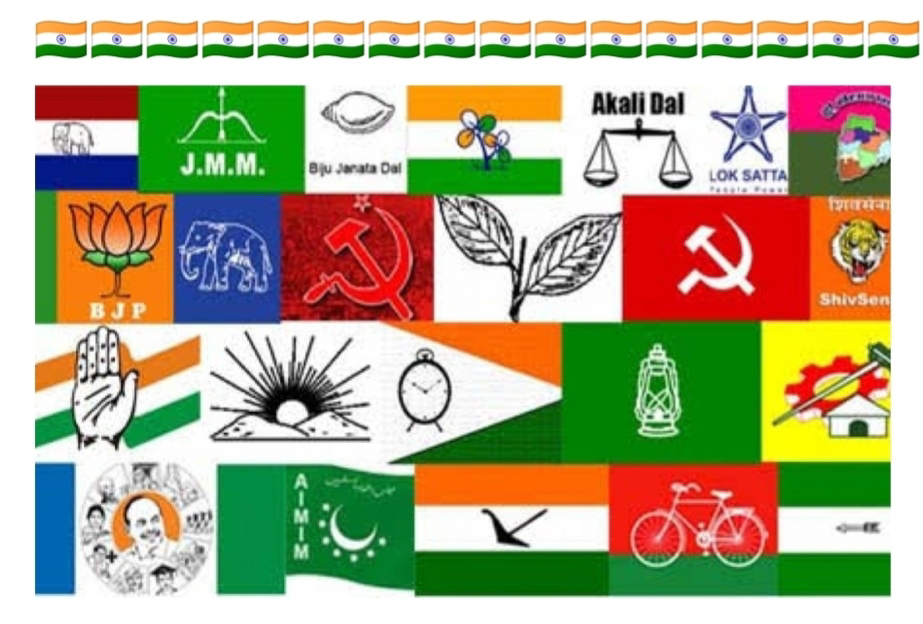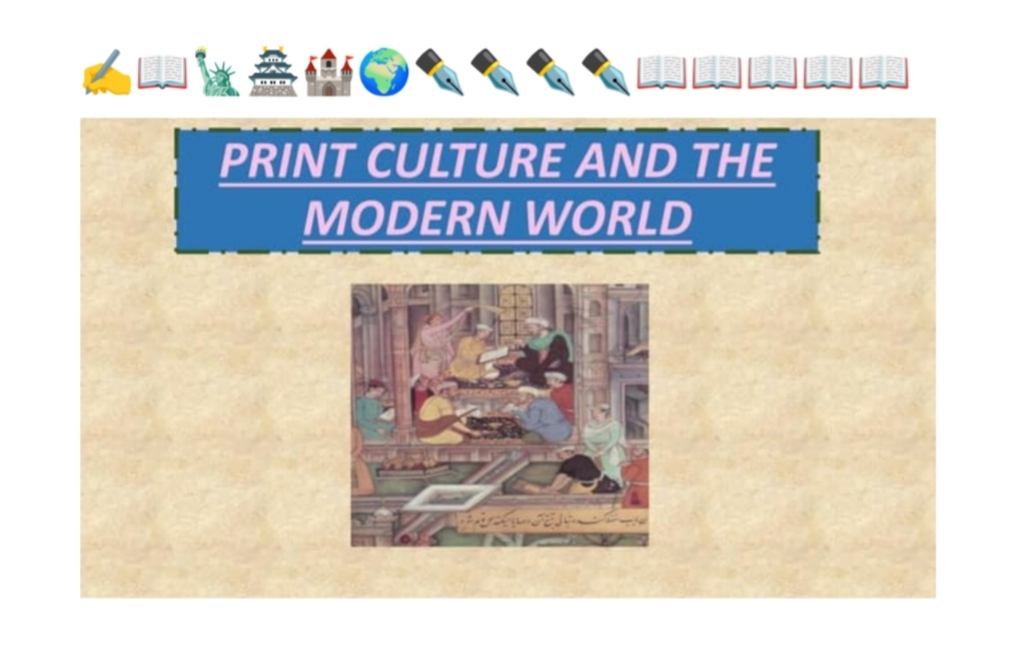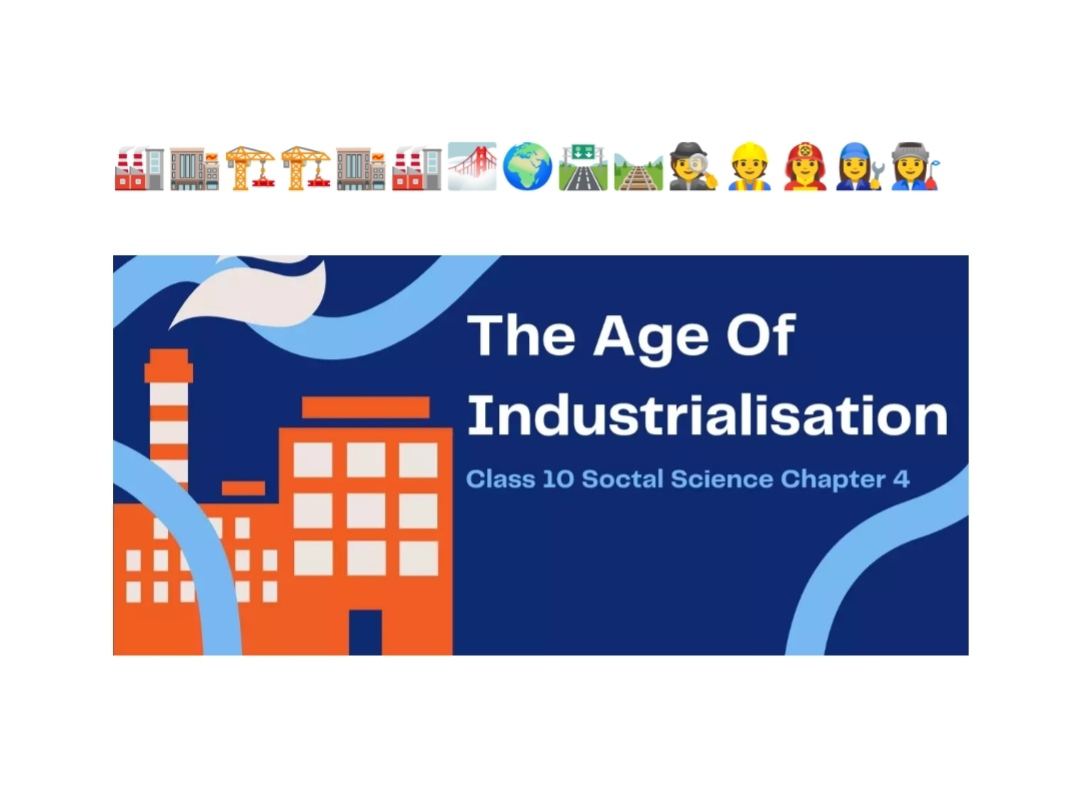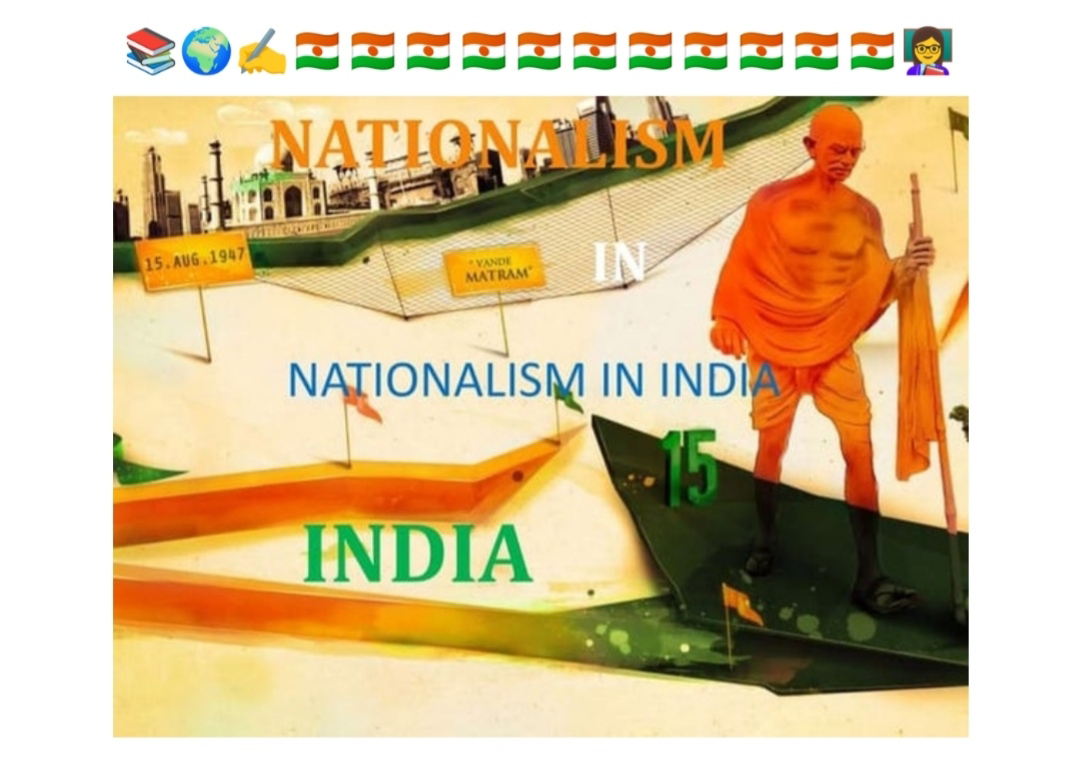Learn CBSE Social science solutions Hindi and English
Notes DEVELOPMENT विकास Cbse class 10th ECONOMICS chapter 1 in Hindi medium हिंदी भाषा मे नोट्स 📚✍️ DOWNLOAD PDF
Notes DEVELOPMENT Cbse class 10th ECONOMICS chapter 1 📚✍️
Notes OUTCOMES OF DEMOCRACY cbse class 10th POLITICS Chapter 5 Notes in English medium ✍️👩🏫 DOWNLOAD PDF
Notes राजनीतिक दल POLITICAL PARTIES Cbse Class 10th POLITICS chapter 4 Notes in Hindi medium हिंदी भाषा नोट्स DOWNLOAD PDF
Notes जाती धर्म और लैंगिक मसले GENDER,RELIGION AND CASTE Cbse Class 10th POLITICS chapter 3 Notes in Hindi medium हिंदी भाषा नोट्स ✍️👩🏫
✍️सार्वजनिक/निजी प्रभाग:
-दरअसल अधिकांश महिलाएं घरेलू श्रम के अलावा कुछ न कुछ वेतन वाला काम भी करती हैं। लेकिन उनके काम को न तो महत्व दिया जाता है और न ही पहचान मिलती है।
-हालाँकि महिलाएँ मानवता का आधा हिस्सा हैं, लेकिन अधिकांश समाजों में सार्वजनिक जीवन विशेषकर राजनीति में उनकी भूमिका न्यूनतम है।
- दुनिया के विभिन्न हिस्सों में महिलाएं समान अधिकारों के लिए संगठित हुईं और आंदोलन किया। महिलाओं की राजनीतिक और कानूनी स्थिति को बढ़ाने और उनकी शैक्षिक और अन्य अवसरों में सुधार की मांग को लेकर आंदोलन हुए। अधिक उग्र महिला आंदोलनों का उद्देश्य व्यक्तिगत और पारिवारिक जीवन में भी समानता लाना था। इन आंदोलनों को नारीवादी आंदोलन कहा जाता है।
✍️पितृसत्तात्मक समाज :
-ज्यादातर समाज पुरुष प्रधान हैं, यहां तक कि दिन-प्रतिदिन महिलाओं की भागीदारी भी बढ़ सकती है, हमारा समाज निम्न आधार पर पितृसत्तात्मक समाज है:
-साक्षरता दर
-कोई आश्चर्य नहीं कि उच्च वेतन वाली और मूल्यवान नौकरियों में महिलाओं का अनुपात अभी भी बहुत कम है।
-उसके काम का भुगतान नहीं किया जाता है और इसलिए अक्सर उसे महत्व नहीं दिया जाता है।
-महिलाओं को पुरुषों की तुलना में कम वेतन दिया जाता है.
-लड़की का जन्म से पहले ही गर्भपात करा दिया गया।
-महिलाओं के खिलाफ विभिन्न प्रकार के उत्पीड़न, शोषण और हिंसा।
✍️धर्म, साम्प्रदायिकता और राजनीति:
-लिंग भेद के विपरीत, धार्मिक मतभेद अक्सर राजनीति के क्षेत्र में व्यक्त किए जाते हैं।
-सांप्रदायिकता तब होती है जब एक धर्म की मान्यताओं को अन्य धर्मों से श्रेष्ठ के रूप में प्रस्तुत किया जाता है, जब एक धार्मिक समूह की मांगें दूसरे धार्मिक समूह के विरोध में बनाई जाती हैं और जब राज्य शक्ति का उपयोग एक धार्मिक समूह का बाकी हिस्सों पर प्रभुत्व स्थापित करने के लिए किया जाता है। राजनीति में धर्म का इस तरह इस्तेमाल सांप्रदायिक राजनीति है.
राजनीति में साम्प्रदायिकता विभिन्न रूप ले सकती है:
-रूढ़िवादी प्रकार के धार्मिक समुदाय और दूसरे धर्मों पर अपने धर्म की श्रेष्ठता में विश्वास
-एक अलग राजनीतिक इकाई बनाने की इच्छा.
-अक्सर इसमें दूसरों की तुलना में हितों को प्राथमिकता देने के लिए विशेष अपील शामिल होती है।
-साम्प्रदायिक हिंसा, दंगे और नरसंहार का वीभत्स रूप।
✍️धर्मनिरपेक्ष राज्य:
-कोई आधिकारिक धर्म नहीं -संविधान किसी भी धर्म को विशेष दर्जा नहीं देता।
-किसी भी धर्म को मानने, आचरण करने और प्रचार करने की स्वतंत्रता।
-संविधान धर्म के आधार पर भेदभाव पर रोक लगाता है।
-राज्य को धर्म के मामले में हस्तक्षेप करने की अनुमति देता है।
-धार्मिक समुदायों के भीतर समानता सुनिश्चित करें।
✍️जाति और राजनीति :
-वे मतदाताओं की जाति संरचना को ध्यान में रखते हैं और विभिन्न जातियों के उम्मीदवारों को नामांकित करते हैं।
-चुनावों में राजनीतिक दल और उम्मीदवार समर्थन जुटाने के लिए जातिगत भावनाओं को भड़काने की अपील करते हैं।
-देश के किसी भी संसदीय क्षेत्र में एक ही जाति का स्पष्ट बहुमत नहीं है।
-कोई भी पार्टी किसी जाति या समुदाय के सभी मतदाताओं का वोट नहीं जीत पाती.
प्रश्न:-
1. लिंग विभाजन से आप क्या समझते हैं?
2. नारीवाद से आप क्या समझते हैं?
3. सांप्रदायिक राजनीति से आप क्या समझते हैं?
4. किन्हीं दो संवैधानिक प्रावधानों का उल्लेख करें। भारत एक धर्मनिरपेक्ष राज्य?
5. श्रम का लैंगिक विभाजन क्या है?
6. साम्प्रदायिक राजनीति के विभिन्न रूपों को एक-एक उदाहरण सहित बताइये।
MAP WORK PDF CBSE CLASS 10th HISTORY 🇮🇳NATIONALALISM IN INDIA🇮🇳 भारत में राष्ट्रवाद मानचित्र कार्य पीडीएफ सीबीएसई कक्षा 10वीं इतिहासDOWNLOAD PDF
Notes PRINT CULTURE AND THE MODERN WORLD📖📚 मुद्रण संस्कृती और आधुनिक दुनिया CBSE Class 10th Chapter 5 PDF notes in Hindi हिंदी भाषा मे
उन्नीसवीं सदी (महिला)
Notes POLITICAL PARTIES Cbse Class 10th POLITICS chapter 4 Notes in English medium
NOTES in English🇮🇳NATIONALISM IN INDIA 🇮🇳cbse class 10th Social science HISTORY chapter 2 🧡🤍💚
NOTES THE AGE OF INDUSTRIALISATION 🏭CBSE CLASS 10th HISTORY CHAPTER 4 in English medium
✍️ NOTES ✍️
THE AGE OF INDUSTRIALISATION 🏭CBSE CLASS 10th HISTORY CHAPTER 4 IN ENGLISH MEDIUM
8. Nationalist Message -
Indian manufacturers advertised the nationalist message very clearly. They said, if you care for the nation then buy products that Indians produce. Advertisement became a vehicle of a nationalist message of Swadesh.
Conclusion.
The age of industries has meant major technological change, growth of factories and making of the new industrial labour force. Small scale industry production and hand technology also played a key role in Industrial revolution.
👇👇👇👇👇 DOWNLOAD PDF👇👇👇👇👇
NOTES Nationalism in India भारत में राष्ट्रवाद 🇮🇳NOTES in Hindi medium PDF हिंदी मे CBSE Class 10th HISTORY Chapter 2
आधुनिक राष्ट्रवाद का विकास उपनिवेश विरोधी आंदोलन से घनिष्ठ रूप से जुड़ा हुआ है। महात्मा गांधी के नेतृत्व में कांग्रेस ने एक आंदोलन के तहत समूहों को एक साथ लाने की कोशिश की। हालाँकि, एकता बिना संघर्ष के उभरी नहीं।
प्रथम विश्व युद्ध, ख़िलाफ़त और असहयोग
1. 1919 में राष्ट्रीय आंदोलन नए क्षेत्रों में फैल रहा था और नए सामाजिक समूहों को शामिल कर रहा था और संघर्ष के नए तरीके विकसित कर रहा था।
2. महात्मा गांधी भारत आए और सत्याग्रह के विचार ने सत्य की शक्ति और सत्य की खोज की आवश्यकता पर जोर दिया। 3. उन्होंने इस बात की वकालत की कि अत्याचारी से लड़ने के लिए शारीरिक बल आवश्यक नहीं है।
4. 1916 में, उन्होंने किसानों को दमनकारी वृक्षारोपण प्रणाली के खिलाफ संघर्ष करने के लिए प्रेरित करने के लिए बिहार के चंपारण की यात्रा की।
सत्याग्रह का विचार
1. महात्मा गांधी जनवरी, 1915 में भारत लौट आए। दक्षिण अफ्रीका में भारतीयों के लिए उनकी वीरतापूर्ण लड़ाई प्रसिद्ध थी। जन आंदोलन की उनकी नवीन पद्धति, जिसे सत्याग्रह के नाम से जाना जाता है, के अच्छे परिणाम मिले।
2. सत्याग्रह के विचार ने सत्य की शक्ति और सत्य की खोज की आवश्यकता पर बल दिया।
3. 1916 में, गांधीजी ने किसानों को दमनकारी वृक्षारोपण प्रणाली के खिलाफ संघर्ष करने के लिए प्रेरित करने के लिए बिहार के चंपारण की यात्रा की।
4. 1917 में, गुजरात के खेड़ा जिले में फसलें उगाई गईं, लेकिन सरकार ने भू-राजस्व माफ करने से इनकार कर दिया और इसकी पूरी वसूली पर जोर दिया।
5. 1918 में, महात्मा गांधी ने अहमदाबाद के श्रमिकों और मिल मालिकों के बीच एक विवाद में हस्तक्षेप किया। उन्होंने श्रमिकों को हड़ताल पर जाने और वेतन में 35% वृद्धि की मांग करने की सलाह दी।
6. सत्याग्रह ने गांधीजी को शहरी क्षेत्रों के कार्यकर्ताओं के निकट संपर्क में ला दिया।
रॉलेट एक्ट
1. जब रॉलेट एक्ट 1919 को भारतीय सदस्यों के सर्वसम्मत विरोध के कारण इंपीरियल विधान परिषद के माध्यम से जल्दबाजी में पारित किया गया, तो गांधीजी का धैर्य समाप्त हो गया।
2. गांधीजी ऐसे अन्यायपूर्ण कानूनों के खिलाफ अहिंसक सविनय अवज्ञा चाहते थे, जिसकी शुरुआत 6 अप्रैल को हड़ताल से होगी।
3. 6 अप्रैल 1919 को सत्याग्रह दिवस के रूप में मनाया गया जब पूरे देश में लोगों ने उपवास और हड़ताल की।
4. 1919, देश ने भारत में एक उल्लेखनीय राजनीतिक जागृति देखी।
5. अमृतसर से स्थानीय नेताओं को उठा लिया गया और महात्मा गांधी को दिल्ली में प्रवेश करने से रोक दिया गया।
6. 10 अप्रैल को, अमृतसर में पुलिस ने एक शांतिपूर्ण जुलूस पर गोलीबारी की, जिससे बैंकों पर व्यापक हमले हुए।
जलियांवाला बाग हत्याकांड
1. जलियांवाला बाग के बंद मैदान में भारी भीड़ जमा हो गई.
2. लोग सरकार के दमनकारी कदम का विरोध करने आए थे जबकि कुछ वार्षिक बैसाखी मेले में भाग लेने आए थे।
3. जनरल डायर ने इलाके में प्रवेश किया। निकास मार्गों को अवरुद्ध कर दिया और भीड़ पर गोलियाँ चलायीं, जिसमें सैकड़ों लोग मारे गये।
4. सरकार ने लोगों को अपमानित करने और आतंकित करने के लिए क्रूर दमन के साथ जवाब दिया।
5.सत्याग्रहियों को ज़मीन पर नाक रगड़ने, सड़कों पर रेंगने और सभी साहिबों को सलाम करने के लिए मजबूर किया गया।
खिलाफत आंदोलन
1. रौलट सत्याग्रह एक व्यापक आंदोलन था, यह अभी भी ज्यादातर शहरों और कस्बों तक ही सीमित था।
2. महात्मा गांधी को अब भारत में अधिक व्यापक आधार वाला आंदोलन शुरू करने की आवश्यकता महसूस हुई।
3. लेकिन उन्हें यकीन था कि हिंदुओं और मुसलमानों को एक साथ लाए बिना ऐसा कोई भी आंदोलन आयोजित नहीं किया जा सकता।
4. प्रथम विश्व युद्ध ओटोमन तुर्की की हार के साथ समाप्त हुआ था। अफवाहें थींकि ओटोमन सम्राट, जो इस्लामी जगत का आध्यात्मिक प्रमुख (खलीफा) था, पर एक कठोर शांति संधि थोपी जाने वाली थी।
5. भारत के मुसलमानों ने ब्रिटेन को अपनी तुर्की नीति बदलने के लिए मजबूर करने का निर्णय लिया।
6. मौलाना आज़ाद, अजमल खान और हसरत मोहानी के नेतृत्व में एक खलीफा समिति का गठन किया गया।
7. भाइयों मुहम्मद अली और शौकत अली जैसे मुस्लिम नेताओं की एक युवा पीढ़ी ने इस मुद्दे पर एकजुट जन कार्रवाई की संभावना के बारे में महात्मा गांधी के साथ चर्चा शुरू की।
आंदोलन के भीतर अलग-अलग पहलू:
1. ग्रामीण इलाकों में विद्रोह: - शहरों से, असहयोग आंदोलन ग्रामीण इलाकों में फैल गया। युद्ध के बाद भारत के विभिन्न हिस्सों में किसानों और आदिवासियों के संघर्ष विकसित हो रहे थे।
2. यहां एक आंदोलन तालुकदारों और जमींदारों के खिलाफ युद्ध था जो किसानों से अत्यधिक लगान और कई अन्य उपकरों की मांग करते थे।
3. किसानों को बेगार करनी पड़ती थी। किसान आंदोलन ने राजस्व में कमी, बेगार की समाप्ति और दमनकारी जमींदारों के सामाजिक बहिष्कार की मांग की।
4. अवध किसान सभा की स्थापना किसके नेतृत्व में की गई थी? जवाहरलाल नेहरू और अन्य, एक महीने के भीतर, ग्रामीणों द्वारा 300 से अधिक शाखाएँ स्थापित की गईं।
5. आदिवासी किसानों ने महात्मा गांधी के संदेश और स्वराज के विचार की दूसरे तरीके से व्याख्या की।
6. औपनिवेशिक सरकार ने बड़े वन क्षेत्रों को बंद कर दिया था जिससे लोगों को अपने मवेशियों को चराने या ईंधन की लकड़ी और फल इकट्ठा करने के लिए जंगलों में प्रवेश करने से रोक दिया गया था।
7. अल्लूरी सीताराम राजू का दावा था कि उनके पास कई तरह की विशेष शक्तियां हैं। उन्होंने जोर देकर कहा कि भारत को केवल बल के प्रयोग से ही आजाद कराया जा सकता है।
सविनय अवज्ञा की ओर
1. महात्मा गांधी ने 1922 में असहयोग आंदोलन वापस लेने का फैसला किया।
2. आंदोलन कई स्थानों पर हिंसक हो रहा था और बड़े पैमाने पर संघर्ष के लिए सत्याग्रहियों को उचित प्रशिक्षण की आवश्यकता थी।
3. सीआर दास और मोतीलाल नेहरू ने परिषद की राजनीति में वापसी के लिए बहस करने के लिए कांग्रेस के भीतर स्वराज पार्टी का गठन किया।
4. नमक एक शक्तिशाली प्रतीक था जो राष्ट्र को एकजुट कर सकता था।
5. अपने 78 विश्वस्त स्वयंसेवकों के साथ नमक मार्च।
6. अंततः. महात्मा गांधी ने एक बार फिर आंदोलन बंद करने का फैसला किया और 5 मार्च 1931 को इरविन के साथ एक समझौता किया।
7. प्रतिभागियों ने आंदोलन को अलग-अलग कोणों से देखा जैसे कि गुजरात के पाटीदार और उत्तर प्रदेश के जाट।
8. व्यावसायिक हितों को संगठित करने के लिए 1920 में भारतीय औद्योगिक एवं वाणिज्यिक कांग्रेस तथा फेडरेशन ऑफ द इंडियन चैंबर ऑफ कॉमर्स एंड इंडस्ट्रीज (FICC[) का गठन किया।
9. गांधीजी ने अछूत अर्थात हरिजन को ईश्वर की संतान कहा।
सामूहिक अपनेपन की भावना
1. राष्ट्रवादी आंदोलन तब फैलता है जब विभिन्न क्षेत्रों और समुदायों के लोगों में सामूहिक अपनेपन की भावना विकसित होने लगती है। किसी राष्ट्र की पहचान अक्सर किसी आकृति या छवि में प्रदर्शित होती है।
2. भारत माता की यह छवि सबसे पहले बंकिरण चंद्र चट्टोपाध्याय ने 1870 में बनाई थी जब उन्होंने हमारी मातृभूमि के लिए 'वंदे मातरम' लिखा था। भारतीय लोक गीतों और भाटों द्वारा गाए गए लोक ने राष्ट्रवाद के विचार को बनाने में महत्वपूर्ण भूमिका निभाई। बंगाल में रवीन्द्रनाथ टैगोर और मद्रास में नटसा, शास्त्री द्वारा लोक कथाओं और गीतों का संग्रह। जिसने लोक पुनरुत्थान के लिए आंदोलन का नेतृत्व किया।
3. स्वदेशी आंदोलन के दौरान, बंगाल में एक त्रि-रंग (लाल, हरा और पीला) झंडा डिजाइन किया गया था, इसमें आठ कमल थे जो आठ प्रांतों का प्रतिनिधित्व करते थे और एक अर्धचंद्र हिंदू और मुसलमानों का प्रतिनिधित्व करता था।
4. राष्ट्रीयता की भावना उत्पन्न करने का साधन इतिहास की पुनर्व्याख्या थी। राष्ट्रवादी लेखकों ने पाठकों से अतीत में भारत की महान उपलब्धियों पर गर्व करने और ब्रिटिश शासन के तहत जीवन की दयनीय स्थितियों को बदलने के लिए संघर्ष करने का आग्रह किया।
नीचे दिये लिंक से pdf Download करे👇👇👇👇👇
NOTESThe Making of Global World 🌍भूमंडलिकृत विश्व का बनना CBSE Class 10th HISTORY Chapter 3 in PDF Hindi medium नोट्स हिंदी भाषा मे
वैश्वीकरण एक आर्थिक व्यवस्था है और यह 50 वर्षों से उभर रही है। वैश्विक दुनिया के निर्माण को समझने के लिए हमें व्यापार, प्रवासन और लोगों की काम की तलाश और पूंजी की आवाजाही के इतिहास को समझना होगा।
पूर्व आधुनिक विश्व
1. मानव समाज लगातार अधिक आपस में जुड़े हुए हैं।
2. यात्रियों, व्यापारियों, पुजारियों और तीर्थयात्रियों ने सामान, धन, विचार, कौशल, आविष्कार और यहां तक कि कीटाणुओं और बीमारियों को ले जाने के लिए लंबी दूरी की यात्रा की।
3. सिंधु घाटी सभ्यता पश्चिम एशिया से जुड़ी हुई थी।
4. कौड़ी मालदीव की मुद्रा का एक रूप है।
रेशम मार्ग दुनिया को जोड़ता है
1. रेशम मार्ग को दुनिया के सुदूर हिस्सों को जोड़ने वाला सबसे महत्वपूर्ण मार्ग माना जाता था।
2. मार्ग ईसाई युग से पहले भी अस्तित्व में थे और 15वीं शताब्दी तक फले-फूले।
3. बौद्ध प्रचारक, ईसाई मिशनरी और बाद में मुस्लिम उपदेशक मार्गों से यात्रा करते थे।
4. मार्ग दुनिया के विभिन्न हिस्सों के बीच व्यापार और सांस्कृतिक संबंधों का एक बड़ा स्रोत साबित हुए।
विजय, रोग और व्यापार:
1. 16वीं शताब्दी में यूरोपीय नाविकों ने एशिया और अमेरिका के लिए समुद्री मार्ग खोजा।
2. भारतीय उपमहाद्वीप वस्तुओं, लोगों, रीति-रिवाजों और ज्ञान के साथ हलचल भरे व्यापार के लिए जाना जाता था। यह उनके व्यापार नेटवर्क में एक महत्वपूर्ण बिंदु था।
3. अमेरिका की खोज के बाद, इसकी विशाल भूमि और प्रचुर फसलों और खनिजों ने हर जगह व्यापार और जीवन को बदलना शुरू कर दिया।
4. पेरू और मैक्सिको में स्थित खदानों से निकली बहुमूल्य धातुओं, विशेष रूप से चांदी ने यूरोप की संपत्ति को बढ़ाया और एशिया के साथ उसके व्यापार को वित्तपोषित किया।
5. पुर्तगाली और स्पेनिश लोगों की अमेरिका पर विजय और उपनिवेशीकरण चल रहा था।
6. स्पैनिश विजेताओं का सबसे शक्तिशाली हथियार कोई पारंपरिक सैन्य हथियार नहीं था बल्कि छोटे पैक्स के रोगाणु थे जो वे अपने साथ ले जाते थे।
7. अमेरिका के मूल निवासियों में इस प्रकार की बीमारियों के प्रति प्रतिरोधक क्षमता नहीं थी।
एक विश्व अर्थव्यवस्था आकार लेती है:
1. मकई कानून का उन्मूलन।
2. भूस्वामी समूहों के दबाव में सरकार ने खाद्यान्न के आयात को प्रतिबंधित कर दिया।
3. कैम कानूनों को खत्म किए जाने के बाद, ब्रिटेन में भोजन का आयात देश में उत्पादित होने की तुलना में अधिक सस्ते में किया जा सकता था।
4. ब्रिटिश किसान आयात से प्रतिस्पर्धा करने में असमर्थ थे। भूमि के विशाल क्षेत्र को बंजर छोड़ दिया गया।
5. जैसे ही खाद्य पदार्थों की कीमतें गिरीं, ब्रिटेन में खपत बढ़ गई।
6. ब्रिटेन में तेज़ औद्योगिक विकास से अधिक आय और अधिक खाद्य आयात हुआ।
प्रौद्योगिकी की भूमिका:
1. 19वीं सदी की दुनिया के परिवर्तन पर प्रौद्योगिकी का बहुत बड़ा प्रभाव पड़ा जैसे रेलवे, स्टीमशिप और टेलीग्राफ।
2. तकनीकी प्रगति अक्सर सामाजिक, राजनीतिक और आर्थिक कारकों का परिणाम थी।
3. प्रशीतित जहाजों ने जल्दी खराब होने वाले खाद्य पदार्थों को लंबी दूरी तक ले जाने में बहुत मदद की।
4. इससे अमेरिका, ऑस्ट्रेलिया या न्यूजीलैंड से विभिन्न यूरोपीय देशों में जमे हुए मांस के शिपमेंट में काफी सुविधा हुई।
उन्नीसवीं सदी (1815 से 1914)
19वीं सदी में, आर्थिक, राजनीतिक, सामाजिक, सांस्कृतिक और तकनीकी कारकों ने समाजों को बदलने और बाहरी संबंधों को नया आकार देने के लिए जटिल तरीकों से बातचीत की।
भारत से अनुबंधित श्रमिकों का प्रवासन
गिरमिटिया मजदूर का मतलब
1. गिरमिटिया मजदूर का अर्थ है किसी नियोक्ता के लिए एक विशिष्ट समय के लिए काम करने के अनुबंध के तहत बंधुआ मजदूर।
2. यह कुछ लोगों के लिए उच्च आय और दूसरों के लिए गरीबी लेकर आया।
भारतीय गिरमिटिया श्रमिकों के प्रवास के कारण
1. अधिकांश पूर्वी उत्तर प्रदेश, बिहार, मध्य भारत और तमिलनाडु के वर्तमान क्षेत्रों से आए थे।
2. भारत के इन क्षेत्रों में कई सामाजिक परिवर्तन हुए जैसे कुटीर उद्योग में गिरावट आई, भूमि लगान में वृद्धि हुई और खदानों और वृक्षारोपण के लिए भूमि साफ़ कर दी गई।
3. 19वीं शताब्दी में गिरमिट को गुलामी की एक नई व्यवस्था के रूप में वर्णित किया गया।
4. होसे, त्रिनिदाद में एक दंगापूर्ण कार्निवल जब सभी जातियों और धर्मों के कार्यकर्ता जश्न मनाने में शामिल होते हैं।
अंतर युद्ध आर्थिक
1. प्रथम विश्व युद्ध मुख्यतः यूरोप में लड़ा गया था।
2. उस समय के दौरान, दुनिया ने आर्थिक, राजनीतिक अस्थिरता और एक और दुखद युद्ध का अनुभव किया।
3. प्रथम विश्व युद्ध टो पावर ब्लॉक के बीच लड़ा गया था। एक पर सहयोगी थे-ब्रिटेन, फ्रांस, रूस और बाद में अमेरिका शामिल हो गया। और विपरीत दिशा में - जर्मनी, ऑस्ट्रिया, हंगरी और ओटोमन और तुर्की।
4. यह युद्ध 4 वर्षों तक चला।
तकनीकी परिवर्तन
1. पहली बार आधुनिक हथियारों जैसे मशीन गन, टैंक, विमान, रासायनिक हथियार आदि का बड़े पैमाने पर उपयोग किया गया।
2. दुनिया भर से लाखों सैनिकों की भर्ती करनी पड़ी। और उनमें से अधिकतर कामकाजी उम्र के पुरुष थे।
ब्रेटन वुड्स संस्थान:
1. बाहरी अधिशेष और घाटे से निपटने के लिए जुलाई 1944 में न्यू हैम्पशायर, यू.एस.ए. में ब्रेटन वुड्स में एक सम्मेलन आयोजित किया गया था।
2. युद्ध के बाद के पुनर्गठन के वित्तपोषण के लिए अंतर्राष्ट्रीय मुद्रा कोष और विश्व बैंक की स्थापना की गई थी।
3. विगत युद्ध अंतर्राष्ट्रीय आर्थिक व्यवस्था को ब्रेटन वुड्स प्रणाली के नाम से जाना जाता है।
4. यह प्रणाली निश्चित विनिमय दरों पर आधारित थी।
5. IMF और विश्व बैंक को ब्रेटन वुड्स ट्विन्स कहा जाता है।
6. अमेरिका के पास प्रमुख आईएमएफ और विश्व बैंक पर वीटो का प्रभावी अधिकार है।
महामंदी अवसाद के लिए जिम्मेदार कारक
1. कृषि का अतिउत्पादन एक समस्या बनी हुई है। इससे कृषि उत्पादों की कीमत में गिरावट आती है।
2. कई देशों ने अपने निवेश का वित्तपोषण संयुक्त राज्य अमेरिका से प्राप्त ऋण के माध्यम से किया।
3. अमेरिकी पूंजीपतियों ने यूरोपीय देशों को दिये जाने वाले सभी ऋण बंद कर दिये।
4. यूरोप में, इसके कारण कुछ प्रमुख बैंक विफल हो गए और स्टर्लिंग जैसी मुद्राएं ढह गईं।
5. संयुक्त राज्य अमेरिका द्वारा आयात शुल्क दोगुना करना, जिससे विश्व व्यापार बुरी तरह प्रभावित हुआ।
नई अंतर्राष्ट्रीय आर्थिक व्यवस्था -NIEO
1. अधिकांश विकासशील देशों को 1950 और 60 के दशक में पश्चिमी अर्थव्यवस्थाओं की तेज़ वृद्धि से लाभ नहीं हुआ।
2. उन्होंने स्वयं को एक समूह के रूप में संगठित किया। 77 या जी-77 का समूह नई अंतर्राष्ट्रीय आर्थिक व्यवस्था (एनआईईओ) की मांग करेगा।
3. यह एक ऐसी प्रणाली थी जो उन्हें अपने प्राकृतिक संसाधनों पर वास्तविक नियंत्रण, अधिक विकास सहायता, कच्चे माल के लिए उचित मूल्य और विकसित देशों के बाजारों में उनके निर्मित माल के लिए बेहतर पहुंच प्रदान करेगी।
चीन में नई आर्थिक नीति
1. चीन जैसे देशों में मजदूरी बहुत कम थी।
2. चीनी अर्थव्यवस्था की कम लागत वाली संरचना ने उसके उत्पादों को सस्ता बना दिया।
3. चीन बहुराष्ट्रीय कंपनियों के लिए निवेश का पसंदीदा स्थान बन गया।
4. चीन की नई आर्थिक नीति विश्व अर्थव्यवस्था के दायरे में वापस।
बहुराष्ट्रीय कंपनियाँ:
1. बहुराष्ट्रीय निगम बड़ी कंपनियाँ हैं जो एक ही समय में कई देशों में काम करती हैं।
2. 1950 और 1960 के दशक में अमेरिकी व्यापार के विश्वव्यापी विस्तार के कारण बहुराष्ट्रीय कंपनियों का विश्वव्यापी प्रसार एक उल्लेखनीय विशेषता थी।
3. विभिन्न सरकारों द्वारा लगाए गए उच्च आयात शुल्कों ने बहुराष्ट्रीय कंपनियों को अपनी विनिर्माण इकाइयाँ स्थापित करने के लिए मजबूर किया।
निष्कर्ष:
पिछले दो दशकों में, दुनिया की अर्थव्यवस्था बहुत बदल गई है क्योंकि चीन, भारत और ब्राजील जैसे देशों ने तेजी से आर्थिक विकास हासिल किया है।
👇नोट्स हिंदी में नीचे दिये लिंक से Download करे👇













